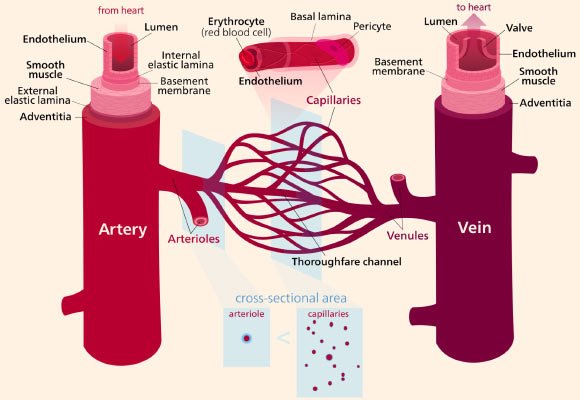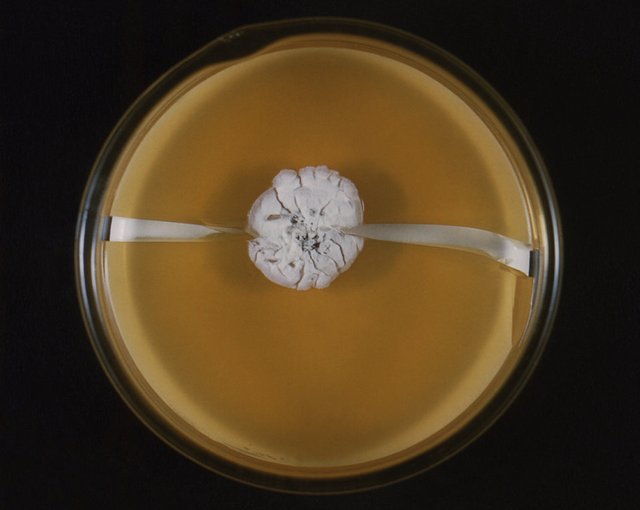Da Vinci Times #6.3
Antioxidants and blood vessels
Abundance of free radicals is a factor correlated to aging, and they are naturally produced by our body as metabolites linked to different activities, such as immune response or production of ATP. It is no coincidence that in last years there is much attention toward dietary products rich in antioxidants.

Imagine CC0 Creative Commons - Source
Image credit: Kelvin Song / CC BY-SA 3.0
Now, a study conducted by the University of Colorado has shown that using specific antioxidants, directed towards the mitochondria, it is possible not only to preserve our arteries, but even bring them back "in time": treated patients, in fact , have shown a serious improvement in their arteries condition, as if they belonged to subjects of fifteen or twenty years younger.
This research could stimulate the use of natural nutraceutical products as a supplement in the diet of each of us, and also as integration for the treatment of cardiocirculatory diseases that afflict an ever increasing number of people.
Ethics of experimenting
In today's research, we face many ethical problems that are difficult to solve, but if on the one hand they always offer new food for thought, on the other they risk to slow down the scientific progress.
 Imagine CC0 Creative Commons - Source
Imagine CC0 Creative Commons - SourceArticle source
 Imagine CC0 Creative Commons - Source
Imagine CC0 Creative Commons - SourceThanks to the progress of knowledge and techniques, it could be possible to artificially create tissues identical to that of our brain, to be used in laboratory for neurological research. But accurate models of our brain, albeit in vitro, could be able to experience something similar to emotional states, or pain, and this inevitably opens the ethical debate about the limit beyond which the human being should not push.
Plastic in Arctic Sea
A group of researchers found that in the Arctic ice several microscopic plastic particles are trapped, in a quantity two or three times greater than previously estimated.
 Imagine CC0 Creative Commons - Source
Imagine CC0 Creative Commons - Source
A total of 17 different types of plastics were found, mostly used for industrial packaging. The concentration is about 12,000 microparticles per liter. According to the authors of the study, this plastic would remain trapped for a time estimated in a maximum of 11 years, which is also the average time it takes a certain portion of ice to melt. Scientists believe that when plastic returns to the sea, it is colonized by algae and microorganisms. These makes it heavier, and cause it to sink to the bottom of the ocean.
Post of the day
 Imagine CC0 Creative Commons - Source
Imagine CC0 Creative Commons - Source
The space engineering is fundamental for our life on the Earth. @proteus-h explains what are the techniques that allow space ships to change the type of orbit, and of all the difficulties that this operation entails.

Immagine CC0 Creative Commons, si ringrazia @mrazura per il logo ITASTEM.
CLICK HERE AND VOTE FOR DAVINCI.WITNESS
Keep in mind that for organizational reasons it’s necessary to use “steemstem” and “davinci-times” tags to be voted.
@aboutcoolscience - @spaghettiscience - @rscalabrini
Antiossidanti e vasi sanguigni
Tra i principali responsabili dell’invecchiamente troviamo sicuramente i radicali liberi, naturalmente prodotti dal nostro corpo come metaboliti collegati a diverse attività, come la risposta immunitaria o la produzione di ATP. Non è un caso che negli ultimi anni, infatti, si faccia un gran parlare di prodotti antiossidanti con cui integrare le nostre diete.

Imagine CC0 Creative Commons - Source
Image credit: Kelvin Song / CC BY-SA 3.0
Ora uno studio condotto dall’Università del Colorado ha dimostrato che attraverso l’uso di antiossidanti specifici, diretti in particolare verso i mitocondri, è possibile non solo preservare le nostre arterie, ma addirittura riportarle “indietro nel tempo”: i pazienti trattati, infatti, hanno mostrato un miglioramento delle condizioni delle proprie arterie, come se queste appartenessero a soggetti di quindici o venti anni più giovani.
Questa ricerca apre le porte all’utilizzo di prodotti nutraceutici naturali come supplemento non solo nella dieta di ciascuno di noi, ma anche come integrazione per la cura delle patologia cardiocircolatorie che affliggono un numero sempre crescente di persone.
Problemi etici
Sempre più spesso, nella ricerca di oggi, ci si trova davanti a problemi etici di difficile soluzione che se da un lato offrono sempre nuovi spunti di riflessione, dall’altro rischiano di rallentare il progresso.
 Imagine CC0 Creative Commons - Source
Imagine CC0 Creative Commons - SourceCon il progredire delle conoscenze e delle tecniche potrebbe essere presto possibile creare artificialmente dei tessuti identici a quello del nostro encefalo, da utilizzare in laboratorio a scopi di ricerca neurologica. Modelli accurati del nostro cervello, seppur in vitro, potrebbero però essere in grado di provare qualcosa di simile agli stati emozionali, o al dolore, e questo apre inevitabilmente il dibattito etico su quale sia il limite oltre il quale come esseri umani non dovremmo spingerci.
Plastica nell’Artide
Un gruppo di ricercatori ha scoperto che nei ghiacci dell’Artide rimangono intrappolate diverse particelle microscopiche di plastica, in misura molto maggiore di quanto stimato fino ad oggi.
 Imagine CC0 Creative Commons - Source
Imagine CC0 Creative Commons - SourceSono stati rilevati ben 17 tipi differenti di plastica, in gran parte usata per gli imballaggi industriali. La concentrazione è pari a circa 12000 microparticelle al litro. Secondo gli autori dello studio, questa plastica rimarrebbe intrappolata per un tempo stimato in un massimo di 11 anni, il tempo che mediamente impiega una certa porzione di ghiaccio per sciogliersi. Gli scienziati ritengono che quando la plastica è restituita al mare, viene colonizzata da alghe e microorganismi. Questi, rendendola più pesante, ne provocano l’affondamento sul fondale dell’oceano.
Post del giorno
by @proteus-h
 Imagine CC0 Creative Commons - Source
Imagine CC0 Creative Commons - Source Il settore spaziale è fondamentale per la nostra vita di tutti i giorni. @proteus-h ci spiega quali sono le tecniche che consentono alle navi spaziali di cambiare tipologia di orbita, e di tutte le difficoltà che questa operazione comporta.

Immagine CC0 Creative Commons, si ringrazia @mrazura per il logo ITASTEM.
CLICK HERE AND VOTE FOR DAVINCI.WITNESS
Si ricorda che per motivi organizzativi è necessario utilizzare le tag “steemstem” e “davinci-times” per essere votati.
@aboutcoolscience - @spaghettiscience - @rscalabrini
👍🏽
que buena información gracias, éxito te sigo